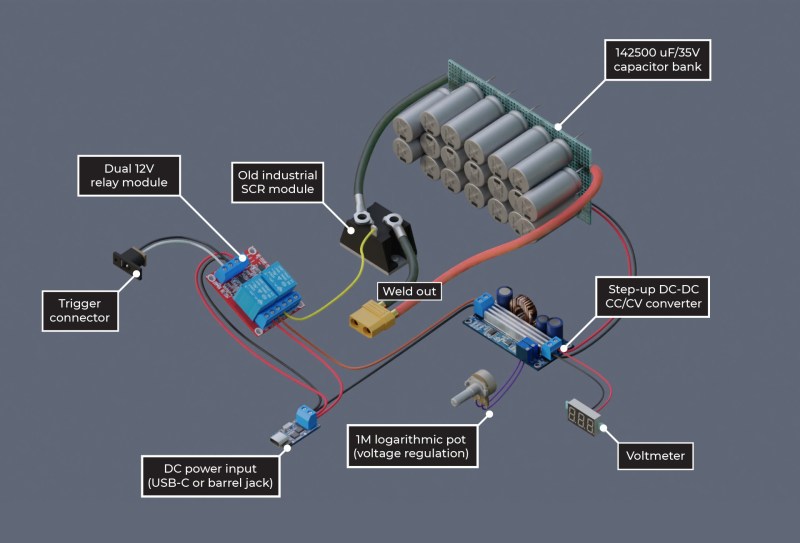DIY spot welders often use high-powered components that can be a bit frightening, given the potential for dangerous malfunctions. [Wojciech “Adalbert” J.] designed his capacitive discharge spot welder to be safe, easy to build, and forego the microcontroller.
Many projects work great with just a single Li-ion cell, but when you need more power, you’ve got to start connecting more cells together into a battery. [Wojciech]’s spot welder is designed to be just powerful enough to weld nickel tabs onto a cell without any overkill. The capacitor bank uses nineteen Nichicon UBY 7500uF/35V capacitors, all wired in parallel using solder wick saturated with solder. They sit atop on a perfboard with metallicized holes to carry the high current.
[Wojciech] has detailed every step of building the welder, including changes to the off-the-shelf relay board and adding a potentiometer to the step-up converter board. The level of detail makes this seem like a good starting place if you’re hoping to hop into the world of DIY spot welders. Safe is always a relative term when dealing with high powered devices, so be careful if you do attempt this build!
DIY spot welders have graced these digital pages many times, including this one built with safety in mind, and this other one that was decidedly not.

















Now that I think of it, I don’t think I’ve ever seen anything listed in millifarads.
A holdover from the days of micro micro farads. We only used some not every 3 powers of 10 with standard terms.
Old car or motorcycle battery, starter solenoid, MOSFET or relay module to trigger starter solenoid, adjustable timer module to trigger MOSFET or relay module.
Not all electrolytics take kindly to rapid, high current discharge. Something to keep an eye on.
Hmmm, thought I might have a single cap I could use, half a pringle can size 0.11F but only 25V on checking. I’ll maybe stick with plan A of saving it as a coil booster for a car ignition…. yes in fact I did want plasma lasers for spark plugs.